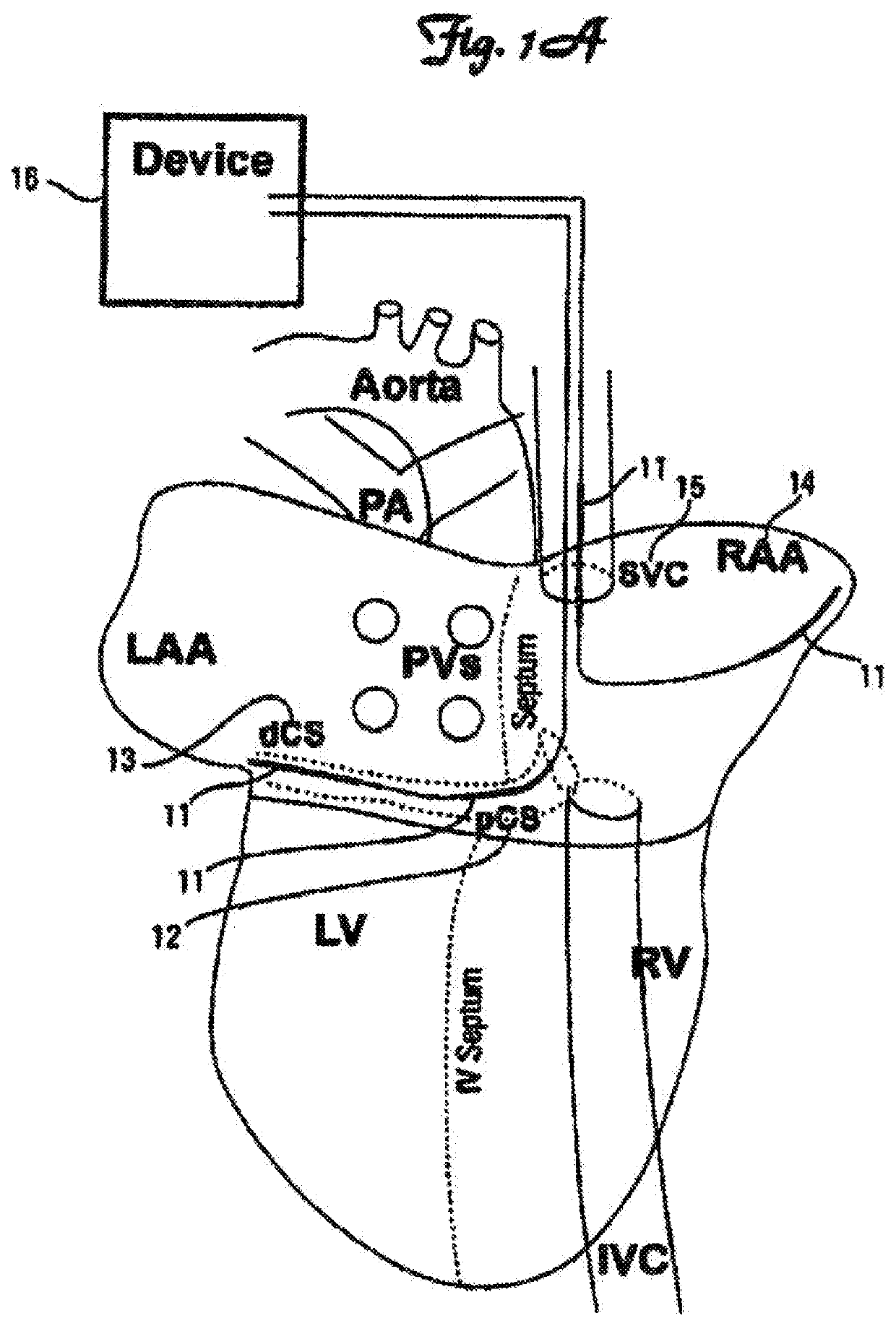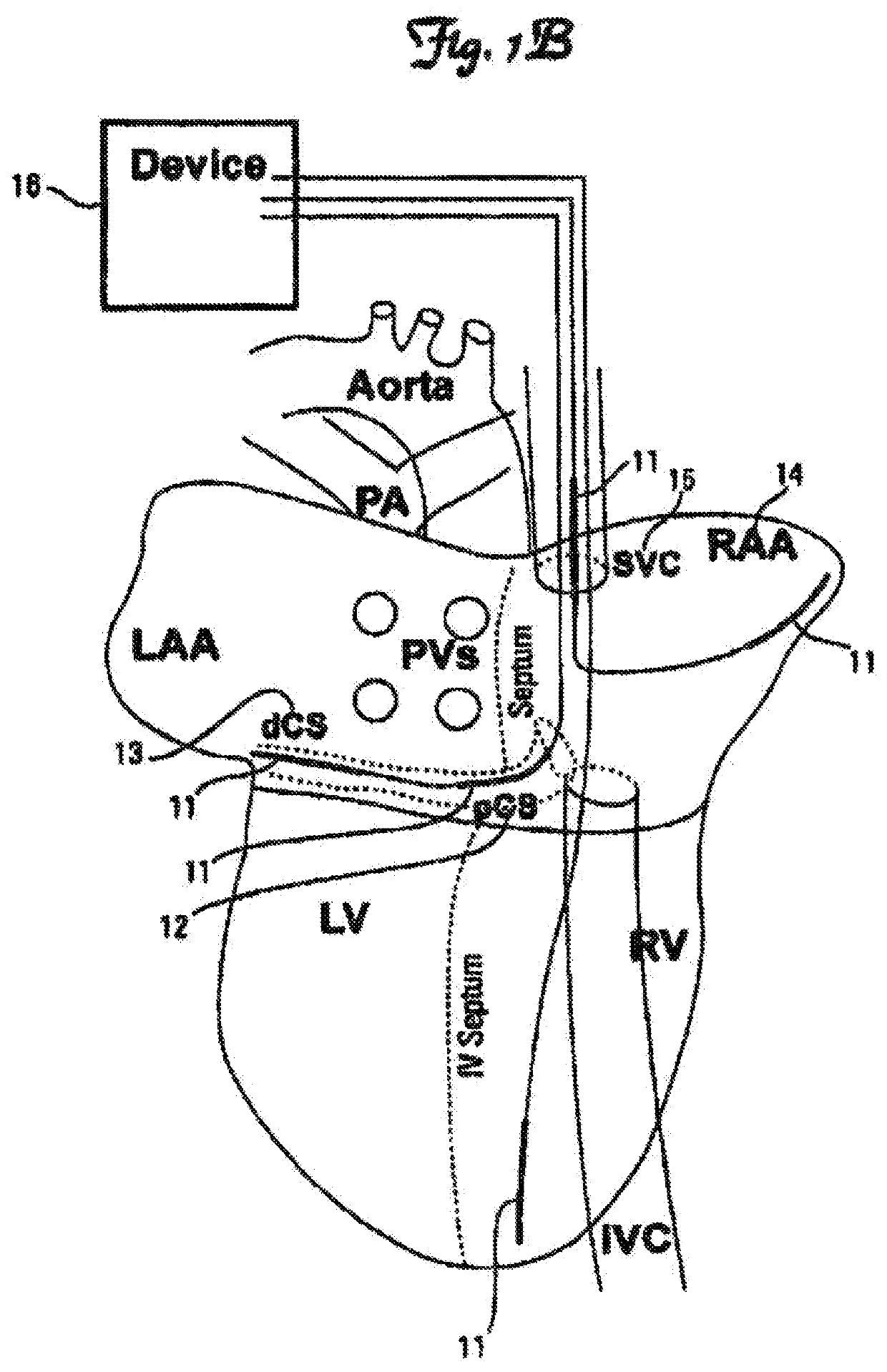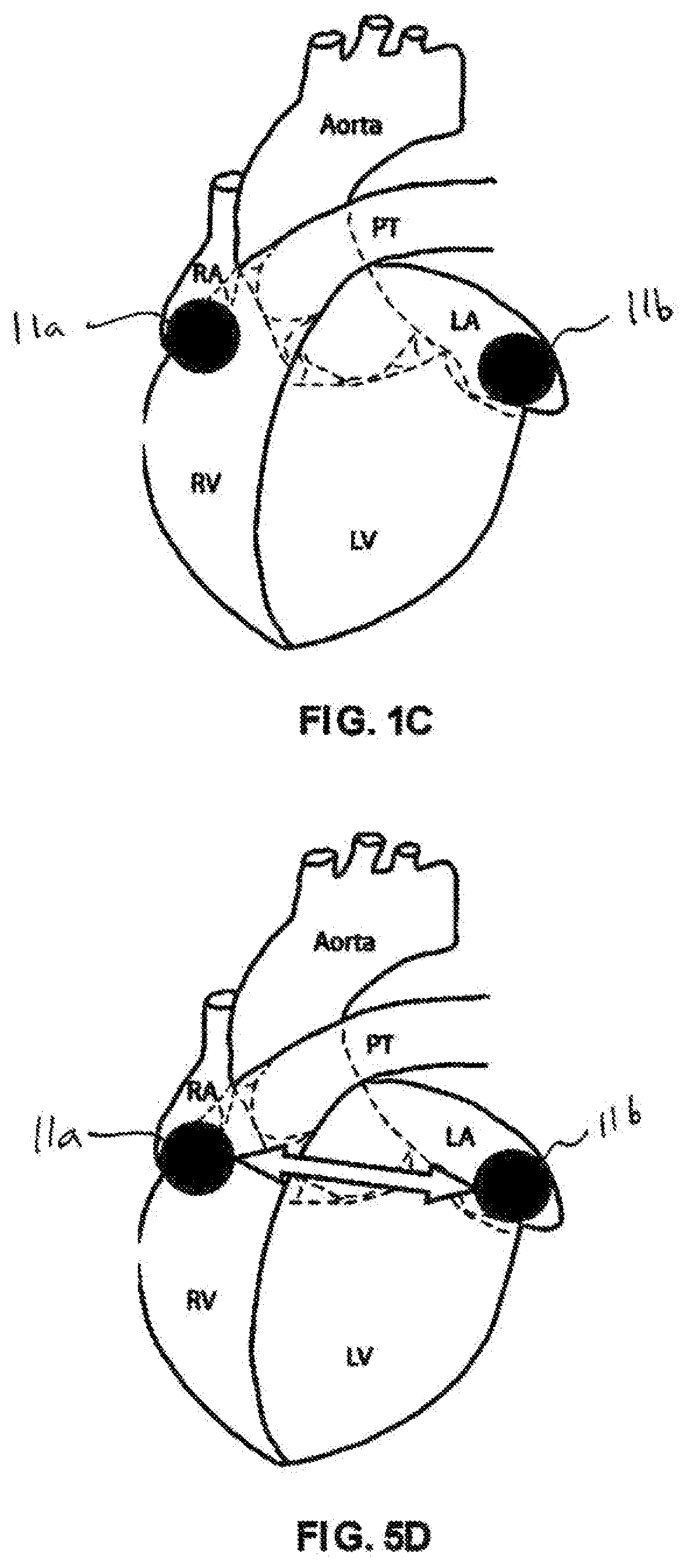Method and device for atrial cardioversion therapy
a cardioversion therapy and atrial arrhythmia technology, applied in the field of atrial arrhythmia treatment, can solve the problems of ineffective drug therapy, increased morbidity and mortality, and af,
- Summary
- Abstract
- Description
- Claims
- Application Information
AI Technical Summary
Benefits of technology
Problems solved by technology
Method used
Image
Examples
Embodiment Construction
[0068]Embodiments of the present disclosure are based on a low-voltage phased unpinning far-field therapy together with near-field therapy that forms the three-stage atrial cardioversion therapy for destabilizing and subsequently terminating anatomical reentrant tachyarrhythmias. A significant reduction in the energy required to convert an atrial arrhythmia can be obtained with this unpinning, anti-repinning and then extinguishing technique compared with conventional high-energy defibrillation, thus enabling successful cardioversion without exceeding the pain threshold of a patient.
[0069]The anatomical structure of cardiac tissue can be inherently heterogeneous. These syncytial heterogeneities of even modest proportions can represent a significant mechanism contributing to the far-field excitation process. Fishier, M. G., Vepa K., Spatiotemporal Effects of Syncytial Heterogeneities on Cardiac Far-field Excitations during Monophasic and Biphasic Shocks, Journal of Cardiovascular Elec...
PUM
 Login to View More
Login to View More Abstract
Description
Claims
Application Information
 Login to View More
Login to View More - R&D
- Intellectual Property
- Life Sciences
- Materials
- Tech Scout
- Unparalleled Data Quality
- Higher Quality Content
- 60% Fewer Hallucinations
Browse by: Latest US Patents, China's latest patents, Technical Efficacy Thesaurus, Application Domain, Technology Topic, Popular Technical Reports.
© 2025 PatSnap. All rights reserved.Legal|Privacy policy|Modern Slavery Act Transparency Statement|Sitemap|About US| Contact US: help@patsnap.com



